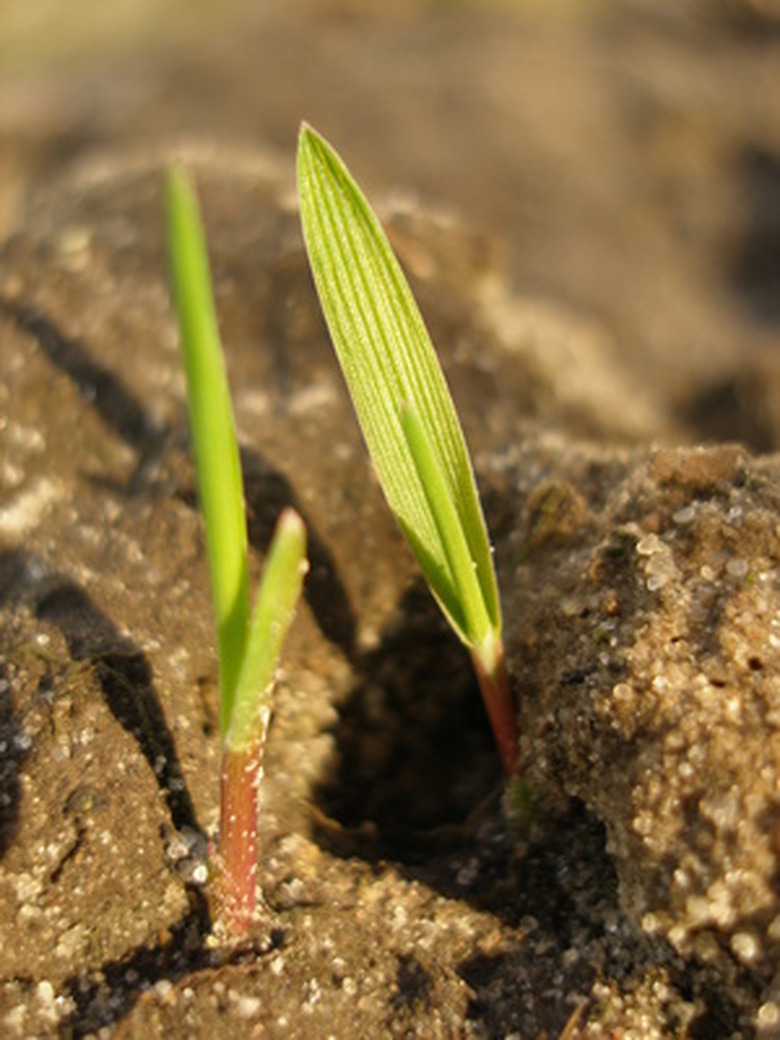How To Troubleshoot My Grass Seed Not Germinating
Things Needed
- Lawn aerator or rake
- Grass seed
- Water
- Phosphate-rich fertilizer
There are many possible reasons why the grass seed you planted did not germinate properly. In order to grow healthy and lush grass, the temperature, soil conditions and moisture must remain within acceptable ranges. Typically, grass will begin to germinate within two to three weeks after being planted. If you have not seen any germination shortly after this recommended germination period, you will want to examine your growing area, as well as the grass seed used, for possible reasons.
Step 1
Check for proper aeration. Hard, crusted soil with no air circulation is not conducive to grass germination. Aerate existing lawn that have been over seeded with new grass seed or use a rake to lightly break up the top 4 inches of soil on newly seeded areas.
- There are many possible reasons why the grass seed you planted did not germinate properly.
- If you have not seen any germination shortly after this recommended germination period, you will want to examine your growing area, as well as the grass seed used, for possible reasons.
Step 2
Verify you used enough grass seed per square foot. Sowing too few grass seeds per square foot will result in poor seed germination. Consult the seed bag for proper sowing ratios and reseed with the correct amount if necessary.
Step 3
Check the age of the grass seed used. The date on the seed bag should be no farther backdated than nine months from the date you planted the grass seed. Reseed with new grass seed, if the seed used is expired and there is time before the first frost arrives.
Step 4
Keep the soil moist. Grass seed will only germinate in moist soil conditions.
- Verify you used enough grass seed per square foot.
- Consult the seed bag for proper sowing ratios and reseed with the correct amount if necessary.
Step 5
Add a phosphate-rich fertilizer. If fertilizer was not used prior to planting your grass seed, add it now at a rate of 8 lbs. per 1,000 square feet. A 6-12-12 fertilizer is recommended.
Tip
Only specific, shade-tolerant grass varieties will grow in shaded areas. If the grass seed has not germinated in shady areas of your lawn, you may need to use a shade-tolerant variety in these areas.
Warning
All grass varieties should list their germination rate on the seed bag. This number, shown in percent, is the percentage of grass seeds you can expect to see germinate.
